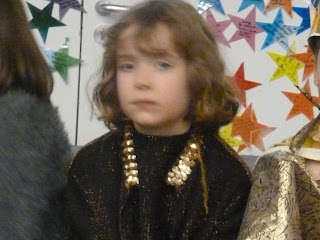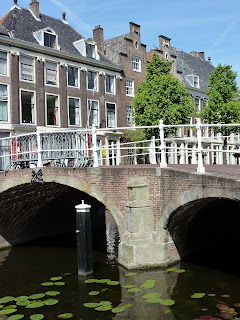Disclaimer: most of this was written after the first two episodes, so it's now kind of out of date. Arse. Been busy.
There has been obvious dumbing down for the anticipated ITV audience. "This is what sexism means." "This is what ageism means." "This is what being gay means." "This is how gay people have children... Yes, they CAN do that." "Here is a view of York Minster just in case you didn't hear the word York. Because yes, we are in York." Poor Kay Mellor - I would love to see what she originally wrote, because I know she can do things (like Love, Lies And Records) slightly more subtly than this.
 |
| Minster view |
 |
| On the real North Sea you only get a porthole in your cabin, never a balcony |
 |
| Trust me, it's the only way to get through the kids Disney cabaret... |
The other burning question is how do they manage to get from Leeds to York and back again so quickly? Sue is the only one who seems to have a decent car, and she crashes that outside the sexual health clinic on Monkgate quite early on, before parking it illegally at the bottom of Stonegate. Unless it's by committing further traffic offences, how are they so immune to the daily jams that block the A64? (Them and the taxi drivers Sue uses after she finally gets her car towed.)
And it's not just the driving that has poor continuity - so do the characters. And you can spot this even if you don't live in York. Sue's seemingly supportive, content and carefree son suddenly turns on her at her birthday party to unleash a load of repressed issues that he blames entirely on her. Sue's total shit of a boss and part-time lover John tells her she is a waste of space and needs to move out of her penthouse (in response to which she throws a jug of mojitos over him in the Cosy Club on Fossgate), but he is then surprised to find her packing her bags in the flat the following morning. And she, oddly, seems pleased to see him, albeit briefly. Until the estate agent turns up.
Sue is features editor for the bridal magazine John owns, until he sacks her (or rather offers her a euphemistic "consultancy role") because she wrote an article about second marriages, which he claims doesn't build on the hopeful dream of marriage that the youth of today still have. They only want to think about first time around, not the possibility of second.
Yet all around Sue are middle-aged women looking for love. Herself included, though she seems to have finally dumped John, who doesn't want to know their son. Gail hankers after her ex, a driving instructor who (bit of a running theme here) hates her son. Micky's mystery lady was clearly after something. (Ah - episode three: turns out she's just bonkers and kills cats for fun.) Sue's mum is getting married to her long-term partner. However, Sue's stance against ageism doesn't extend to her own mother when she hears this. "Gross", Sue snips dismissively.
Sue should set up her own bridal magazine for the ladies of a certain age that she has become - it sounds like a good money spinner. (Episode four, maybe?) After all, tastes change within the same dream. Strapless skinny bridal gowns just don't sit right on someone over 40. Plus you have different priorities as you age. For example, I am now much more interested in articles about switching child trust funds to Junior ISAs in Woman and Home than ones guaranteeing orgasms in Cosmopolitan.
Sue's magazine just needs a honeymoon travel section with articles about Thailand so that Gail's son can mug up a bit more the next time he comes out of prison pretending to have been running a timeshare business "somewhere in the middle bit". That's if he gets let out again, having overshot his curfew by having sex with Linda's daughter. (Oh, there he is on the sofa in episode three - that was a quick spell inside.)
I am not sure how things will pan out. Who is telling the truth, Linda or mystery dress agency woman? (Ah, it's Linda - episode three.) Will lollipop lady Gail help the love of her life to cross the road, or will she go back to the ex before the decree nisi becomes absolute? Will Sue be allowed to babysit for the house of gay couples or is there just too much gin around for her to be trusted? Will Andrew get his anti-ageism day in court with "doesn't want to know" dad John? Will the ladies reform the band that protested at Greenham and performed at Linda and Micky's wedding? Will Gail's mother make another run for Scarborough in her nightie? Will Linda ever understand financial matters? Will Linda and Sue perform Morecambe and Wise sketches in bed? Will Gail get rid of her grandson's nits? (Oh, he got kidnapped in episode three.)
My husband works very near to the Trinity Centre in Leeds, and we've often been there for lunch with our daughter, sadly to overpriced but reliably child friendly chains rather than the pop-up street food that put the shopping mall on the map. Trinity also has several familiar clothes stores, an Everyman cinema, a Lego shop that we do our best to avoid and a glass roof that turns the whole place into a furnace in summer. The three girlfriends are spotted walking through Trinity on their way between the spa that serves the green sludge and the rooftop bar that serves the birthday cocktails, though where that actually is I have no idea.
 |
| Trinity, Leeds (Photo: David O'Brien) |



















